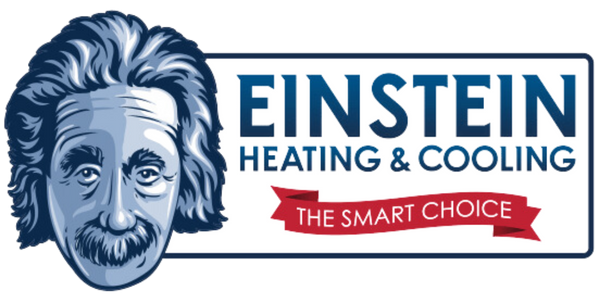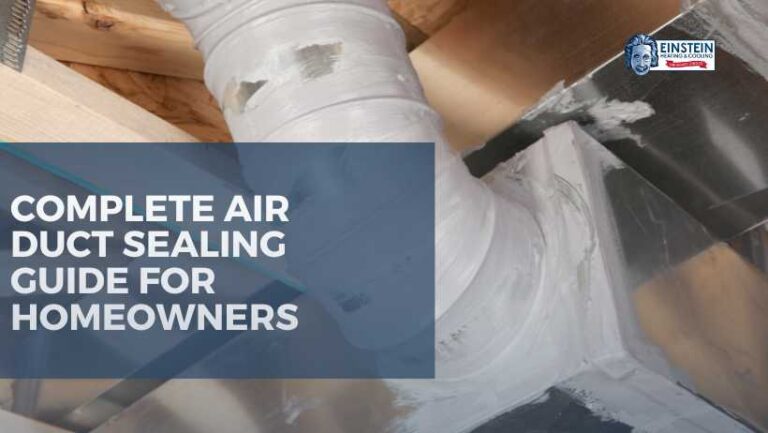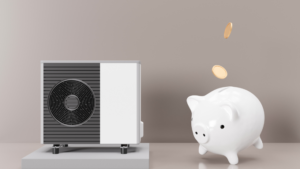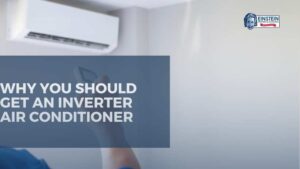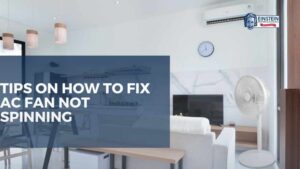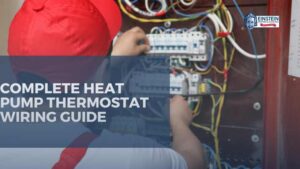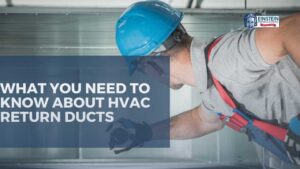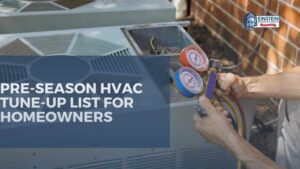Air duct sealing is a crucial step in ensuring that your HVAC system operates at its peak efficiency, ultimately leading to reduced energy consumption and lower utility bills. This comprehensive guide will walk you through the various aspects of air duct sealing, offering insights, tips, and techniques to help you achieve optimal performance.
Why Should You Seal Your Air Ducts?
Beyond the initial “why,” understanding the tangible benefits of sealing ductwork can motivate you to take action:
- Enhanced Comfort: Leaky ducts rob conditioned air, creating temperature imbalances and hot/cold spots in different rooms. Sealing them ensures consistent, comfortable temperatures throughout your home, eliminating drafts and providing year-round thermal bliss.
- Reduced Energy Bills: Leaky ducts force your HVAC system to work harder to maintain desired temperatures, translating to higher energy bills. Sealing them minimizes air loss, leading to significant energy savings, often up to 30%. Imagine the impact on your wallet and the environment!
- Improved Indoor Air Quality: Leaky ducts act as unintentional vacuum cleaners, sucking in dust, pollen, and other allergens from unconditioned spaces. Sealing them minimizes infiltration of these contaminants, promoting a healthier environment for you and your family, especially those with allergies or respiratory sensitivities.
- Reduced Stress on Your HVAC System: Leaky ducts put undue strain on your system, leading to premature wear and tear and potentially shortening its lifespan. Sealing them allows your HVAC system to operate more efficiently, extending its life and saving you money on repairs and replacements down the line.
- Reduced Noise: Leaky ducts can create whistling and rattling sounds, especially when your HVAC system is working hard. Sealing them minimizes these noises, contributing to a quieter and more peaceful home environment, allowing you to relax and unwind without unwanted distractions.
Signs Your Air Ducts Need Sealing
Uneven Heating or Cooling
If certain areas of your home consistently feel warmer or colder than others, it could be a sign of air leaks in your ductwork. Sealing these leaks ensures a more uniform distribution of air.
Increased Energy Bills
A sudden spike in energy bills without a corresponding change in usage patterns might indicate that your HVAC system is working harder due to air leaks. Sealing the ducts and cleaning your AC properly can bring those bills back under control.
Dusty or Dirty Vents
Air duct leaks can draw in dust and debris from attics, crawl spaces, or other areas. If you notice an accumulation of dust around your vents, it’s a sign that your ducts may need sealing.
Whistling or Hissing Sounds
Listen for unusual sounds coming from your HVAC system, such as whistling or hissing. These noises often indicate air escaping through leaks in the ductwork. Identifying and sealing these leaks can improve the efficiency of your system and reduce energy waste.
Inconsistent Airflow
If you experience inconsistent airflow from your vents, with some rooms receiving more air than others, it could be a clear indication of leaks in the ducts. Sealing these leaks ensures a balanced and consistent airflow throughout your home, enhancing the overall comfort level.
Visibly Damaged Ductwork
Inspect the visible sections of your ductwork for any signs of damage, such as disconnected joints, crushed or bent sections, or visible holes. Damaged ducts not only compromise the efficiency of your HVAC system but also contribute to air leakage. Sealing these damaged areas is crucial for optimal performance.
Pest Infestations
Unsealed ducts can serve as entry points for pests and rodents seeking refuge in your home. If you notice signs of pest infestations or droppings around your ducts, it’s a clear indicator that there are openings that need sealing to prevent unwanted intruders.
Mold or Mildew Growth
Moisture entering through duct leaks can create an ideal environment for mold or mildew growth. If you observe any musty odors or notice visual signs of mold around your vents or ducts, it’s essential to address the issue promptly by sealing the leaks to prevent further growth and maintain indoor air quality.
Respiratory Issues
Leaky air ducts can introduce pollutants and allergens into your home, leading to poor indoor air quality. If you or your family members experience an increase in respiratory issues, such as allergies or asthma symptoms, it may be linked to unsealed ductwork. Properly sealing the ducts can significantly improve the air quality within your living space.
Age of the Ductwork
As air ducts age, they become more prone to wear and tear. If your home has older ductwork, it’s advisable to regularly inspect and seal any potential leaks to ensure the continued efficiency of your HVAC system and prevent energy wastage.
Materials and Tools for Air Duct Sealing
Mastic Sealant
Mastic is a versatile sealant that adheres well to various duct materials. It remains flexible, preventing cracks and gaps from reappearing over time.
Foil Tape
Foil tape is an effective option for sealing joints and seams. It withstands temperature changes and provides a durable seal, especially in areas with high heat.
Duct Insulation
Insulating ducts not only prevent energy loss but also help maintain the temperature of the air as it travels through the system.
Weather Stripping
In addition to mastic sealant and foil tape, weather stripping is a crucial material for sealing ductwork. Applied around openings and edges, weather stripping enhances the overall insulation by sealing gaps and preventing air leakage. This is particularly important in areas prone to extreme weather conditions, as it ensures that the HVAC system operates efficiently, maintaining a consistent indoor climate.
Duct Sealant Aerosol
Aerosol sealants provide a convenient and efficient way to seal smaller gaps and cracks in air ducts. These sealants often come in easy-to-use spray cans, allowing for precise application in hard-to-reach areas. They are especially useful for quick fixes and touch-ups after the initial sealing process.
HVAC Duct Sealing Putty
Sealing putty is an effective option for filling larger gaps and holes in ductwork. Its pliable nature makes it easy to mold and shape, providing a secure and long-lasting seal. This type of sealing material is particularly useful when dealing with irregularities or uneven surfaces in the ductwork.
Duct Wrap
Duct wrap serves as an additional layer of insulation for air ducts. It is particularly beneficial in areas where temperature variations are extreme. The wrap is designed to encase the ducts, providing an extra barrier against heat loss or gain, thereby enhancing the overall energy efficiency of the HVAC system.
Duct Sealant Brushes
To ensure thorough coverage and application of sealants, duct sealant brushes are indispensable tools. These brushes allow for precise and even distribution of sealants over the duct surfaces, ensuring that every joint, seam, or gap is effectively sealed. Proper application using these brushes contributes to the longevity and effectiveness of the HVAC duct sealing process.
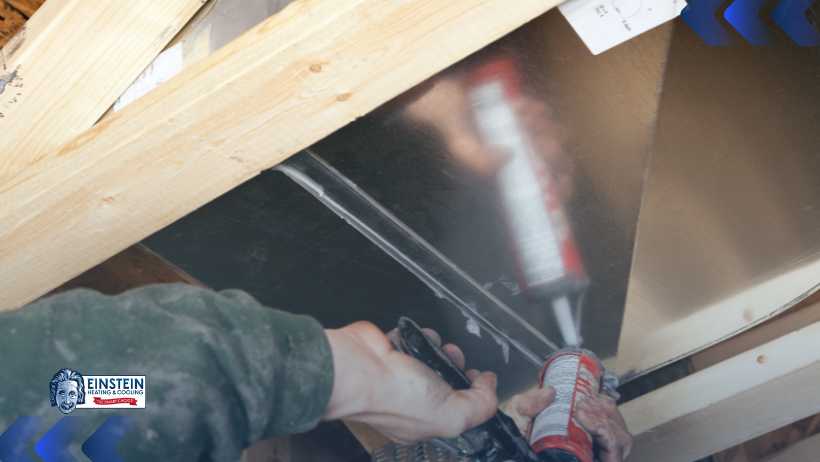
DIY vs. Professional Air Duct Sealing
While the allure of DIY projects might be strong, consider these factors before deciding:
DIY Air Duct Sealing:
- Pros: Potentially less expensive, suitable for small, easily accessible leaks. Ideal for handy homeowners who enjoy tackling projects themselves.
- Cons: Requires time, knowledge, and appropriate tools. Might not be effective for complex leaks or inaccessible areas. Risks overlooking crucial leaks, potentially negating the effort and cost.
Professional HVAC Duct Sealing:
- Pros: Thorough inspection, use of specialized tools and techniques, ensures proper sealing of all leaks, often backed by warranties. Saves time and hassle, especially for complex jobs.
- Cons: More expensive than DIY, but the investment can be offset by energy savings and extended HVAC lifespan.
How to Seal Air Ducts
Prepare the Ductwork
- Clean the Ducts: Remove any dust, debris, or contaminants from the ducts before starting the sealing process.
- Identify Leaks: Use a smoke pencil or an infrared camera to locate hidden leaks that may not be visible to the naked eye.
Sealing Small Leaks
- Apply Mastic: Use a brush or gloved hand to apply mastic generously over small leaks. Ensure a smooth and even coating.
- Use Foil Tape: For small gaps or seams, apply foil tape tightly to create a secure seal. Press down firmly to ensure proper adhesion.
Sealing Larger Leaks
- Reinforce with Mesh: For larger gaps or holes, consider using mesh or fiberglass tape along with mastic for added reinforcement.
- Professional Injection: In cases of significant leaks, expert HVAC technicians may use injection methods to deliver sealants deep into the ductwork, ensuring comprehensive coverage.
- Apply Joint Sealant: Focus on sealing the joints between duct sections using a high-quality joint sealant. This helps prevent air leakage at the connection points.
- Use Duct Putty: Apply duct putty to fill any gaps or seams at the joints, creating a tight and durable seal. Ensure that the putty is evenly distributed and covers the entire joint.
Insulate Ducts
- Install Insulation: To further enhance energy efficiency, consider adding insulation to the ductwork. This not only helps in maintaining the desired temperature but also minimizes the risk of condensation.
- Choose Appropriate Insulation: Select insulation materials based on the specific needs of your HVAC system and climate conditions. Common options include fiberglass, foam board, or reflective insulation.
Perform a Pressure Test
- Conduct a Blower Door Test: After sealing the ducts, perform a blower door test to assess the overall effectiveness of the sealing process. This test helps identify any remaining leaks that may need attention.
- Address Any Detected Leaks: If the pressure test reveals additional leaks, promptly address them by applying mastic, foil tape, or other suitable sealants. Ensure thorough coverage to achieve optimal results.
Monitor and Maintain
- Regular Inspections: Schedule periodic inspections to check for any signs of wear, damage, or new leaks in the ductwork. Promptly address any issues to maintain the effectiveness of the sealing efforts. Make sure to clean the ductwork periodically.
- Clean Ducts Periodically: Keep the ducts clean to prevent the accumulation of dust and debris, which can compromise the seals over time. Regular cleaning contributes to the longevity of the sealed ductwork.
Benefits of Properly Sealed Air Ducts
Energy Efficiency Improvement
Well-sealed ducts prevent the loss of conditioned air, allowing your HVAC system to operate more efficiently and consume less energy.
Extended HVAC System Lifespan
Reducing the workload on your HVAC system by sealing ducts can extend its lifespan, saving you from costly repairs or premature replacements.
Environmental Impact Reduction
Lower energy consumption means a reduced environmental impact. By sealing your ducts, you contribute to a more sustainable and eco-friendly living environment.
Enhanced Indoor Air Quality
Properly sealed air ducts not only prevent the escape of conditioned air but also inhibit the infiltration of dust, pollutants, and allergens from the outside. This translates to improved indoor air quality, creating a healthier living space for you and your family.
Consistent Room Comfort
Sealed ducts help maintain a more consistent distribution of conditioned air throughout your living or working spaces. This ensures that each room receives an adequate amount of heating or cooling, eliminating hot or cold spots and enhancing overall comfort.
Cost Savings on Utility Bills
The improved energy efficiency resulting from sealed ducts leads to significant cost savings on your utility bills. With less energy wasted, your HVAC system doesn’t have to work as hard, translating into lower monthly expenses and a more budget-friendly approach to maintaining a comfortable home.
Compliance with Energy Efficiency Standards
Many regions have established energy efficiency standards for residential and commercial buildings. Ensuring that your air ducts are properly sealed not only helps you meet these standards but may also make you eligible for energy-related incentives or rebates, contributing to additional savings.
Reduced Noise Levels
In addition to their role in energy efficiency, well-sealed ducts can also contribute to a quieter living environment. Properly sealed ducts by expert HVAC technicians minimize air leaks and vibrations, resulting in a reduction of noise generated by the HVAC system, providing a more peaceful atmosphere in your home or workplace.
Prevention of Moisture Issues
Sealing air ducts helps in preventing the entry of moisture, which can lead to mold growth and other moisture-related issues. By maintaining a dry and well-regulated environment, you protect your home from potential structural damage and health hazards associated with mold and mildew.
Conclusion
In conclusion, air duct sealing is a crucial step toward achieving energy efficiency, cost savings, and improved indoor air quality. Whether you choose to embark on a DIY sealing project or enlist the help of professionals from Einstein Heating and Cooling, the benefits are undeniable. Regular maintenance and inspections further ensure that your HVAC system operates optimally, contributing to a more sustainable and comfortable living environment.
